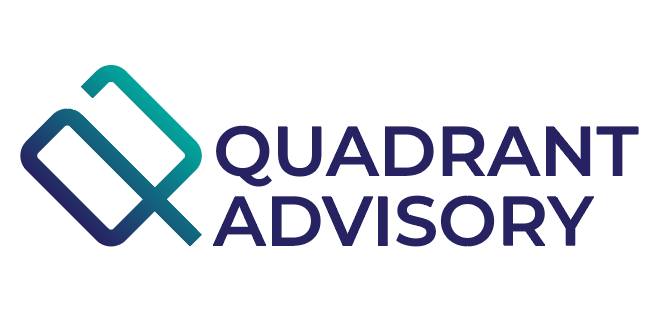Unlocking the Power of Financial Reporting: How to Drive Business Growth

In today’s ever-evolving business landscape, financial reporting is no longer just about keeping track of numbers and balancing the books. It has become a powerful tool for driving business growth and making strategic, data-driven decisions. But how exactly can businesses unlock the true potential of financial reporting? In this article, we delve into the various strategies and best practices that can help businesses harness the power of financial reporting to fuel their growth. From understanding the key metrics and insights provided by financial reports to leveraging technology and automation to streamline the reporting process, we explore the steps businesses can take to make the most of this vital information. With the right approach, financial reporting can provide a comprehensive view of a company’s performance, profitability, and efficiency, enabling business owners and decision-makers to identify strengths, weaknesses, and opportunities for improvement. By utilizing these insights, businesses can make informed decisions, identify trends, and adapt their strategies to stay ahead in today’s competitive market. Join us as we unlock the power of financial reporting and discover how it can drive business growth and success.
The Importance of Financial Reporting for Businesses

In the contemporary business landscape, the role of accurate, timely, and insightful financial reporting cannot be overstated. Financial reports are not just statutory obligations; they serve as the backbone of effective business management and strategic planning. As a CFO and Managed Accounting Firm, we understand that financial reporting transcends the mere tracking of income and expenses; it is the lifeblood that fuels a company’s growth ambitions. Below are some reasons why financial reporting is indispensable for businesses of all sizes and sectors.
Facilitating Informed Decision-Making
High-quality financial reporting provides the data needed to make well-informed business decisions. Whether it’s launching a new product, entering a new market, or restructuring the company, financial reports offer valuable insights into the viability of these initiatives. They provide metrics and trends that are crucial for understanding the current financial standing, making it easier for decision-makers to map out future plans.
Ensuring Compliance and Transparency
Regulatory compliance is a mandatory aspect of running a business, and financial reports ensure that a company is compliant with the laws and regulations of the jurisdiction it operates in. Transparent reporting can also enhance a company’s reputation, making it easier to attract investors and strategic partners.
Improving Operational Efficiency
Analyzing financial reports can offer keen insights into operational efficiencies or lack thereof. By tracking key performance indicators (KPIs) and other financial metrics, businesses can identify areas where they can cut costs, optimize processes, and ultimately boost profitability.
Attracting Investors and Securing Loans
In today’s competitive market, growth often necessitates external funding from investors or financial institutions. A strong financial reporting framework not only attracts potential investors but also facilitates the loan application process. Lenders and investors rely heavily on financial reports to assess the risk associated with their investment.
Risk Management
Effective financial reporting involves the scrutiny of not just the successes but also the risks and challenges a business may face. Through techniques such as variance analysis, which examines the difference between actual and budgeted outcomes, companies can preemptively identify potential issues and take corrective action before they escalate.
Planning and Forecasting
Financial reports are also vital tools for planning and forecasting. By reviewing past performance data and the current financial position, companies can more accurately predict future revenue, expenses, and cash flow. This is particularly helpful for setting budgets and financial objectives for upcoming periods.
Types of Financial Reports and Their Purpose

In today’s complex business environment, financial reporting is not a one-size-fits-all activity. There are various types of financial reports, each serving a distinct purpose and providing unique insights into different facets of a business. Knowing when to use which report can significantly improve your decision-making process and strategic planning. As a CFO and Managed Accounting Firm, we guide our clients through this myriad of reporting options. Often businesses may rely only on the three major reports as listed here on investopedia, but there are several other reporting options. Here is a breakdown of some of the most common types of financial reports and their primary purposes.
Income Statement
Purpose: To provide a comprehensive overview of revenues, costs, and expenses over a particular time frame, typically a quarter or a year.
Key Insights: Gross margin, operating profit, net profit, and trends over time. Useful for understanding profitability and operational efficiency.
Also known as the Profit and Loss Statement, the income statement offers a detailed look at a company’s revenue, expenses, and profits over a specific time period, often quarterly or annually. It provides key metrics like gross profit, operating income, and net income, offering stakeholders a snapshot of how well the business is performing.
Balance Sheet
Purpose: To present a snapshot of a company’s assets, liabilities, and equity at a particular moment in time.
Key Insights: Liquidity, solvency, and the overall financial structure. Critical for assessing a company’s ability to meet its short-term and long-term obligations.
The balance sheet is a financial snapshot at a specific point in time, showing what the company owns (assets), owes (liabilities), and the residual interest of shareholders (equity). It follows the fundamental accounting equation: Assets = Liabilities + Equity. Understanding the balance sheet is crucial for evaluating a company’s liquidity, solvency, and overall financial structure.
Cash Flow Statement
Purpose: To provide an account of cash generation and usage segmented into operations, investments, and financing activities.
Key Insights: Operational cash flow health, investment returns, and cash movements from financing activities. Essential for cash management and liquidity planning.
Cash is king in business, making the cash flow statement an essential component of financial reporting. This document outlines how changes in the balance sheet and income statements affect cash and cash equivalents. It categorizes cash flow into operating activities, investing activities, and financing activities, thereby giving a comprehensive overview of cash usage and generation.
Statement of Equity
Purpose: To show the changes in the equity components, including issued shares, retained earnings, and other reserves, over a period.
Key Insights: Ownership structure, dividend distribution, and reserve allocation. Helpful for investors to understand how their equity is affected.
The Statement of Equity, sometimes referred to as the Statement of Retained Earnings or Equity Statement, provides an overview of the changes in a company’s equity over a particular period. It includes elements like issued capital, retained earnings, and dividends distributed, offering insights into a company’s capital structure and how it is financing its operations and growth.
Budgets and Forecasts
Purpose: To project financial performance over a future period based on current and historical data.
Key Insights: Revenue growth rates, anticipated expenses, and expected cash flows. Vital for planning and strategic decision-making.
Accounts Receivable and Payable Reports
Purpose: To track money owed to the company and debts the company owes, often broken down by the age of the debt.
Key Insights: Liquidity risks, collection efficiency, and payment schedules. Important for managing cash flows and operational effectiveness.
Expense Reports
Purpose: To detail the different types of expenditures incurred by the business.
Key Insights: Cost structure, spending patterns, and areas for cost-saving. Useful for budget optimization and operational efficiency.
KPI Dashboards
Purpose: To provide real-time monitoring of key performance indicators related to financial and operational aspects of the business.
Key Insights: Instant insights into business performance metrics, enabling timely decisions.
Variance Analysis Reports
Purpose: To compare actual performance against budgeted or projected figures, helping to identify any variances and their reasons.
Key Insights: Effectiveness of budget planning, areas requiring attention, and operational adjustments needed.
Management Discussion and Analysis (MD&A)
Though not a ‘financial statement’ per se, the MD&A is a critical part of a company’s annual report. This section provides management’s perspective on the financial results, offering context for the numbers. It usually covers market conditions, financial ratios, and future outlook, providing a more qualitative and forward-looking perspective.
Understanding the types of financial reporting is imperative for making informed business decisions. It provides a structured way to capture, analyze, and interpret financial data, enabling a business to assess its performance, plan its future, and satisfy stakeholder expectations. With the integration of technology, financial reporting has transcended from being merely informational to becoming a strategic asset for driving business growth.
How to Interpret Financial Reports

Financial reports are only as valuable as your ability to understand and act upon the information they contain. Interpretation of these reports is an essential skill that business owners, managers, and stakeholders must master to drive informed decisions and achieve strategic goals. As a CFO and Managed Accounting Firm, we often assist our clients in this critical aspect of financial management. Here are some guidelines on how to interpret various financial reports:
Understanding the Income Statement
When looking at an income statement, focus on key metrics like revenue growth, gross margin, and net profit. Compare these numbers to previous periods to assess performance trends. A consistently growing revenue or margin indicates a strong business, whereas frequent fluctuations may signal instability.
Evaluating the Balance Sheet
On the balance sheet, pay attention to the ratios between assets, liabilities, and equity. Liquidity ratios like the current ratio (current assets divided by current liabilities) help you gauge the company’s ability to meet short-term obligations. Solvency ratios, such as debt to equity, give you an idea of the company’s long-term financial stability.
Scrutinizing the Cash Flow Statement
For the cash flow statement, look closely at the operating cash flow, which shows if the company is generating enough cash from its core operations to sustain itself. Negative cash flows from operations over an extended period could be a red flag.
Comprehending the Statement of Changes in Equity
In this statement, examine how equity is evolving over time. A growing equity base is generally a positive sign, indicating that the company is retaining profits or raising capital effectively.
Budgets and Forecasts
Compare actual performance against projected figures. Large variances should be investigated to understand the root cause, and future forecasts should be adjusted accordingly.
Accounts Receivable and Payable Reports
High accounts receivable could either indicate strong sales or ineffective collections. Similarly, high accounts payable might mean robust purchasing or potential liquidity issues. Aging reports can help you further delve into these nuances.
Reading Expense Reports
Look for trends in spending, and compare them to the corresponding periods of increased revenue. This helps in understanding the return on spending and identifying any wasteful expenditures.
Deciphering KPI Dashboards
Understanding key performance indicators (KPIs) is crucial for real-time decision-making. Whether it’s customer acquisition cost, lifetime value, or churn rate, make sure you know what each metric means and how it correlates with financial performance.
Variance Analysis
Identify the discrepancies between actual and budgeted performance. This will not only help in understanding the effectiveness of your planning but also point out areas that require immediate attention.
Leveraging Technology for Better Interpretation
Modern financial software can significantly simplify the process of interpreting financial reports by providing real-time analytics, trend lines, and interactive dashboards. As a CFO and Managed Accounting Firm, we can help implement these technologies to give you more actionable insights.
Interpreting financial reports may seem daunting, but it’s an indispensable skill for informed decision-making. With a deep understanding of what each report represents and the use of advanced analytics tools, you can unlock the power of financial reporting to drive your business growth.
Using Financial Reports to Make Informed Business Decisions

Armed with an understanding of various financial reports and their components, the next step is leveraging this information for decision-making. Financial reports are not just about compliance or historical record-keeping; they are invaluable tools that can guide your business strategies and decisions. As a CFO and Managed Accounting Firm, we specialize in helping companies utilize their financial data effectively. Here’s how to use financial reports to make informed business decisions.
Budget Allocation and Resource Management
Analyze your income statement to understand where revenues are strongest and which costs are the most significant. Use this information to allocate resources to high-revenue areas and scrutinize high-cost areas for inefficiencies.
Investment Decisions
Your balance sheet and cash flow statements can help you assess whether the company has enough liquidity for strategic investments, such as new equipment, research and development, or market expansion. Evaluate the return on investment (ROI) and long-term benefits before making investment decisions.
Cash Flow Management
Regularly review your cash flow statement to ensure your business has sufficient cash to operate. Understanding your operational cash inflow and outflow trends allows you to plan for seasonal changes in business or preempt potential cash shortages.
Risk Assessment and Mitigation
Financial reports can also serve as an early warning system for potential problems. Regularly checking metrics like debt ratios, liquidity ratios, and accounts receivable turnover can provide indicators of potential financial risk, enabling you to take mitigative action promptly.\
Strategic Planning and Goal Setting
Use financial reports as the basis for setting achievable targets for your business. Whether you’re planning for revenue growth, cost reduction, or capital allocation, having accurate and comprehensive financial data can make your goals more realistic and achievable.
Pricing Strategies
Understanding your cost structure in depth can help you set the right pricing strategies for your products or services. This is where the income statement and expense reports can offer valuable insights into per-unit costs, fixed and variable expenses, and overall profit margins.
Benchmarking and Performance Evaluation
Comparative financial analysis over multiple periods or against industry standards can help evaluate your company’s performance. Understanding where you stand compared to your peers can offer insights into areas for improvement or potential competitive advantages that you can capitalize on.
Employee Productivity and Compensation
Utilizing financial metrics like revenue per employee or profit per employee can help assess staff productivity, which in turn informs decisions on compensation, promotions, or potential layoffs.
Leveraging Technology for Decision-making
Modern financial software tools can provide real-time updates, predictive analytics, and interactive dashboards, making it easier to turn data into actionable insights. As a CFO and Managed Accounting Firm, we can help you integrate these technologies into your financial reporting and decision-making processes.
In summary, financial reports are far more than just statutory requirements; they are a treasure trove of data that, when correctly interpreted and utilized, can drive smarter decision-making and spur business growth. Whether you’re allocating resources, assessing risks, or planning for the future, a well-rounded understanding of financial reporting can be one of your most powerful tools.
Common Challenges in Financial Reporting and How to Overcome Them

Financial reporting, while crucial, is not without its challenges. From data accuracy to compliance and timely reporting, several issues can complicate the process. As a CFO and Managed Accounting Firm, we’ve encountered these challenges firsthand and have helped businesses navigate through them. Here are some common challenges in financial reporting and strategies for overcoming them.
Data Accuracy
Challenge: Inaccurate data can significantly skew the insights derived from financial reports, leading to poor decision-making.
Solution: Implement rigorous data validation checks and audit trails. Utilize software that minimizes manual entry and integrates seamlessly with other business systems to capture data automatically and accurately.
Complexity in Reporting
Challenge: Financial reports can become complex due to multiple revenue streams, geographical locations, or a variety of products and services. This complexity makes the reporting process cumbersome and difficult to manage.
Solution: Use specialized financial reporting software that can handle complex data sets and segment information effectively. Develop templates for different types of reports to standardize the reporting process.
Compliance and Regulatory Issues
Challenge: Staying up-to-date with ever-changing financial regulations and compliance requirements can be taxing.
Solution: Regular training for your financial team on the latest compliance standards is essential. Automated compliance tools can also help you stay aligned with current regulations, thereby reducing the risk of non-compliance.
Timely Reporting
Challenge: Delays in financial reporting can result in outdated information, making it less useful for decision-making and potentially causing compliance issues.
Solution: Implement a structured reporting calendar and utilize automated software to expedite the data collection and reporting process. A dedicated team should oversee this to ensure deadlines are met.
Lack of Real-time Insights
Challenge: Traditional financial reports are often historical and don’t offer real-time insights, making them less actionable.
Solution: Modern financial software with real-time analytics and dashboards can provide ongoing insights into your financial data. As a CFO and Managed Accounting Firm, we can help you integrate such technologies into your reporting infrastructure.
Difficulty in Data Interpretation
Challenge: Financial reports are of no use if the team cannot understand or interpret the data correctly.
Solution: Regular training sessions on financial literacy for non-financial team members can help in better data interpretation. Also, using visual aids like charts and graphs can make complex data easier to understand.
High Costs
Challenge: The financial reporting process can be costly, especially for small and medium-sized enterprises (SMEs) that may not have the resources for a dedicated in-house financial team.
Solution: Outsourcing financial reporting to a managed accounting firm can be a cost-effective solution, providing you with expertise and freeing up internal resources for other core activities.
Technology Integration
Challenge: Companies often use a mix of software solutions for different business activities, which may not always integrate smoothly for financial reporting.
Solution: Opt for software solutions that offer easy integrations with your existing tools. This will ensure seamless data flow and more accurate reporting.
Overcoming these challenges requires a combination of the right people, processes, and technologies. By proactively addressing these issues, you can enhance the reliability, timeliness, and usefulness of your financial reports, thereby making them a more powerful tool for decision-making and business growth.
Best Practices for Effective Financial Reporting

In the realm of business management, financial reporting stands as a cornerstone of transparency, strategic planning, and informed decision-making. Having aided numerous companies in this area, we understand that beyond just adhering to compliance standards, effective financial reporting can provide a competitive edge. Here are some best practices to ensure that your financial reporting is not only compliant but also insightful and actionable.
Regular Review and Update of Financial Policies
Keep your financial policies and procedures up-to-date to reflect any changes in business operations or accounting guidelines. A regularly reviewed policy helps maintain consistency in financial reporting.
Streamline Data Collection
Minimize manual data entry as much as possible by automating data collection methods. Utilize software that can integrate with your other business solutions to ensure data consistency and reduce the chances of errors.
Define KPIs and Metrics
Clearly define the Key Performance Indicators (KPIs) and metrics that are most relevant to your business. Consistently track these in your financial reports to offer stakeholders a focused view of business performance.
Prioritize Transparency
Be as transparent as possible in your reporting. Clear, straightforward financial statements build trust with stakeholders, from investors to employees.
Ensure Timely Reporting
Timeliness is critical in financial reporting. Establish and adhere to a strict schedule for preparing and disseminating financial reports. Being punctual allows for quicker decision-making and reflects well on your company’s management efficiency.
Reconcile Regularly
Monthly or quarterly reconciliation of accounts is essential to verify that all data is accurate and complete. Frequent reconciliation makes year-end closing processes smoother and less error-prone.
Employ Visual Aids
Use charts, graphs, and other visual aids to make complex financial data more understandable. This can help both financial and non-financial stakeholders grasp the essentials quickly.
Maintain an Audit Trail
Keep a well-documented audit trail for all financial transactions. This practice is not only essential for compliance but also beneficial if you need to review or validate past financial data.
Segregate Duties
To minimize the risk of fraud or errors, segregate duties among your finance team. For example, the person responsible for making payments should not be the same person reconciling the accounts.
Leverage Technology
Utilize modern financial software that can offer real-time analytics, forecast capabilities, and interactive dashboards. As a CFO and Managed Accounting Firm, we can guide you in selecting and implementing the technology that aligns with your business needs.
Continuous Training and Development
Invest in ongoing training programs for your finance team to keep them abreast of the latest accounting principles, tools, and compliance requirements.
Seek Expert Guidance
Engaging external experts for regular financial audits or consultations can provide valuable third-party perspectives. They can help identify potential issues or areas for improvement that may not be apparent to your internal team.
Implementing these best practices can significantly improve the quality and effectiveness of your financial reports. It will not only help in complying with regulatory standards but also equip you with the tools needed to make intelligent business decisions. With accurate, timely, and insightful financial reporting, your company is better positioned for sustainable growth.
Tools and Software for Streamlined Financial Reporting

In today’s digital age, the reliance on manual processes for financial reporting is quickly becoming a thing of the past. Efficient financial reporting is no longer just about accuracy; it’s about getting accurate data fast and using it to make real-time business decisions. This shift is facilitated by a plethora of tools and software designed to streamline every aspect of financial reporting. As a CFO and Managed Accounting Firm, we strongly advocate for the adoption of technology to simplify and enhance your financial reporting processes. Here are some of the best tools and software that can revolutionize the way you approach financial reporting.
Enterprise Resource Planning (ERP) Software
Examples: SAP, Oracle, Microsoft Dynamics
Features: ERP solutions offer integrated financial management modules that can handle everything from accounting to compliance and risk management.
Accounting Software
Examples: QuickBooks, Less Accounting, Xero, FreshBooks
Features: These tools automate routine accounting tasks and offer basic financial reporting features. They are particularly useful for small to medium-sized businesses.
Business Intelligence Tools
Examples: Tableau, Power BI, QlikView
Features: These tools help in the visualization of financial data, making it easier to interpret complex numbers and make quick decisions.
Financial Planning & Analysis (FP&A) Software
Examples: Adaptive Insights, Anaplan, Vena Solutions
Features: FP&A software offers more advanced forecasting and analytics capabilities. It allows for what-if scenarios, variance analyses, and detailed financial projections.
Spreadsheet Software
Examples: Microsoft Excel, Google Sheets
Features: While not as advanced as other specialized software, spreadsheets offer a great deal of flexibility for custom financial reporting.
Document Management Systems
Examples: SharePoint, Box, Dropbox Business
Features: These systems are essential for storing, sharing, and managing all financial documents securely.
Compliance Management Software
Examples: LogicGate, Sparta Systems, MasterControl
Features: This software helps in ensuring that your financial reporting adheres to all compliance requirements and regulations.
Real-time Analytics Platforms
Examples: Sisense, Zoho Analytics, Looker
Features: Real-time analytics tools can integrate with other software to provide up-to-the-minute financial insights, making your reporting more agile and responsive.
Cloud-Based Solutions
Examples: NetSuite, Workday, Sage Intacct
Features: Cloud-based financial reporting tools offer the advantage of remote access, automated updates, and easier integration with other cloud services.
Automated Data Integration Tools
Examples: Talend, Zapier, MuleSoft
Features: These tools automate the data gathering process by pulling data from various sources and aggregating it into a central system for reporting.
Specialized Industry Tools
Examples: WolfePak (Oil & Gas), BlackLine (Accounting), Prophix (Corporate Performance Management)
Features: These are tools tailored for specialized financial reporting needs in specific industries.
Custom Solutions
Features: For companies with unique financial reporting requirements, custom software can be developed to meet specific needs.
In conclusion, the range of available tools and software means there’s a solution for every company, regardless of size or industry. Leveraging these technologies will not only make the financial reporting process faster and more accurate but also enable more insightful analyses and decision-making. As experts in the field, we can help you choose and implement the right tools to optimize your financial reporting capabilities.
The Role of Financial Reporting in Driving Business Growth

Financial reporting is often viewed as a regulatory requirement or a managerial obligation, something that needs to be done to keep the business running smoothly from an operational perspective. However, the potential impact of effective financial reporting stretches far beyond mere compliance or administrative function; it plays a critical role in driving business growth. As a CFO and Managed Accounting Firm, we’ve seen firsthand how strategic financial reporting can empower businesses to expand and thrive. Here’s how:
Offers a Realistic Snapshot of the Business
Financial reports provide a snapshot of where the business stands at any given time. By regularly monitoring financial statements like balance sheets, income statements, and cash flow statements, leadership can assess the financial health of the business, which is essential for growth.
Guides Investment and Resource Allocation
Knowing where to invest for maximum return is crucial for business growth. Financial reporting helps in identifying the most and least profitable aspects of the business, thus guiding where to allocate resources efficiently.
Enables Data-Driven Decisions
Data-backed decisions typically yield better results compared to gut-feelings or instinctive choices. Financial reports provide the data needed to make informed decisions, from launching a new product to entering a new market or making an acquisition.
Facilitates Stakeholder Communication
Investors, lenders, and even employees want to know how well the business is doing. Transparent financial reporting builds stakeholder confidence, which is vital for securing investments, loans, and even retaining top talent—all of which contribute to business growth.
Enhances Strategic Planning
Long-term strategic planning is almost impossible without accurate financial data. Financial reports offer the insights needed to set realistic goals and devise actionable strategies to achieve them.
Helps in Risk Management
Every business faces risks, but understanding what those risks are and how they can impact financial stability is key to mitigating them. Financial reporting aids in identifying economic vulnerabilities and opportunities, allowing businesses to implement effective risk management strategies.
Drives Operational Efficiencies
By highlighting the cost centers and areas where spending exceeds budget, financial reporting helps businesses streamline operations. Improved operational efficiency often leads to cost savings, thereby freeing up resources that can be used for expansion or other growth activities.
Sets the Stage for Innovation
Growth often necessitates innovation, be it in terms of products, services, or business processes. Financial reports can highlight areas where innovation could be beneficial, helping to set the stage for research & development initiatives.
Allows for Competitive Benchmarking
Financial statements can also be used to compare performance against industry averages or direct competitors, providing insights into where the company stands in the market and what it needs to do to gain a competitive edge.
Facilitates Compliance and Funding Opportunities
Accurate financial reporting not only ensures compliance with regulatory standards but also opens doors for funding through grants, incentives, or favorable loan terms, which can significantly aid in business growth.
To sum up, financial reporting is not just a routine or a regulatory mandate but a powerful tool that, when used correctly, can drive business growth in a substantial manner. It provides actionable insights, fosters stakeholder confidence, facilitates informed decision-making, and serves as the backbone for strategic planning—all of which are essential ingredients for scaling a business successfully.
Conclusion: Harnessing the Power of Financial Reporting for Long-Term Success

Financial reporting, far from being a mere compliance requirement or a box to be checked off, holds the key to sustainable business growth and long-term success. As we’ve discussed, from aiding in investment decisions to improving stakeholder relations, from enhancing strategic planning to guiding innovation, effective financial reporting serves as a multi-faceted tool for businesses striving to scale.
Many companies, unfortunately, undervalue the importance of financial reporting and miss out on its transformative potential. They either lack the expertise or the technological infrastructure to make the most out of this goldmine of actionable insights. As a CFO and Managed Accounting Firm, we cannot emphasize enough the advantages that come from giving financial reporting the attention and investment it truly deserves. And thanks to technological advancements, the process has become more straightforward, accurate, and insightful than ever before.
Today’s advanced tools and software not only simplify data collection and compliance but also enable real-time analytics, offering businesses the ability to make quick, informed decisions. When leveraged appropriately, these technologies can not just simplify but also amplify your financial reporting capabilities, making your business more agile, better informed, and growth-oriented.
So as you move forward, make it a point to not just ‘do’ financial reporting but to ‘utilize’ it, to harness its full potential to drive decision-making, stakeholder communication, and ultimately, business growth. This commitment to understanding and applying financial insights is what separates successful businesses from the rest. By acknowledging the significant role that financial reporting plays in the bigger picture, you are well on your way to securing your business’s long-term success.
